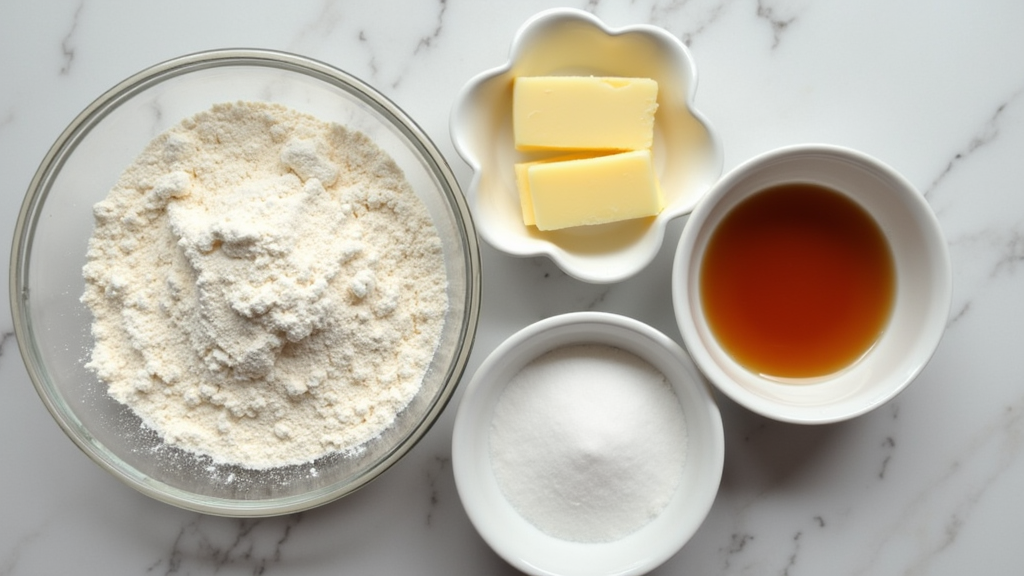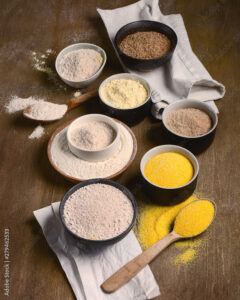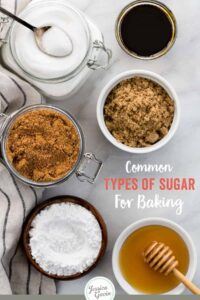
Baking at home is super rewarding, but for beginners, figuring out what every ingredient does can be confusing. Whether you’re making cookies, cakes, or a simple loaf of bread, the ingredients in your pantry have specific roles that really matter. Even small swaps can completely change the way your baked treats turn out, so getting the basics down sets you up for good baking vibes every time.
If you’ve ever wondered why your muffins didn’t rise or your bread turned out a bit dry, the answer usually ties back to your ingredients and how they work together. Understanding the fundamentals gives you more control and boosts your baking confidence, from following recipes to experimenting on your own.
Here’s a practical guide to the essential baking ingredients, plus the details on what they actually do inside your favorite recipes. Think of it as your secret weapon for better baking at home.
1. Flour: The Foundation of Baking
Flour is the base of most baking recipes. It’s what gives bread, cakes, and cookies their shape and structure. Wheat flour, the kind you’ll usually find at the grocery store, contains proteins that form gluten when mixed with water. Gluten gives dough its stretchy texture and traps gas bubbles, helping baked goods rise.

- All-purpose Flour: My go-to for most cakes, cookies, and quick breads. It strikes a balance between protein and softness.
- Bread Flour: Higher in protein than all-purpose flour, which is perfect for chewy breads and pizza doughs.
- Cake Flour: Lower protein, so it makes cakes and pastries light and tender.
- Other Flours: You’ll also see recipes calling for whole wheat, almond, or coconut flour. These bring unique textures and flavors, but they behave differently than wheat flours, so swapping them in isn’t always straightforward.
Measuring flour properly (by spooning it into the measuring cup and leveling it off) is super important because too much flour can make baked goods dry or dense. It may feel like a fussy step, but it’s the difference between a light, tender cake and one that turns out tough.
2. Sugar: Sweetness Plus More
Sugar obviously brings sweetness, but it does a lot more in baking. It helps with browning, keeps baked goods moist, and even affects how they rise. The type of sugar you use can change the flavor and texture of your results.
- Granulated Sugar: The classic white sugar is used in cookies, cakes, and most baked goods.
- Brown Sugar: Adds a slight caramel flavor and more moisture. Great in brownies, chocolate chip cookies, and some cakes.
- Powdered Sugar: Super fine, so it dissolves quickly. I use this for icings and frostings.
- Other Options: Honey, maple syrup, and other sweeteners change the finished texture and can also affect moisture. Worth experimenting if you feel like being adventurous.

Sugar helps baked goods brown. That golden crust on top of a cookie or cake? Mostly thanks to the sugar doing its thing in the oven. Don’t be afraid to try different kinds of sugar, like coconut sugar or even date syrup, to put your own spin on classic recipes.
3. Leaveners: Rise and Shine
Leavening agents are what make your baked goods light, fluffy, and full of air pockets. Without them, you’d be eating flat bread and dense cakes.
Yeast
Yeast is a living microorganism that feeds on sugar and produces carbon dioxide. This gas gets trapped in gluten networks, giving bread and some pastries that airy texture. Yeast works slowly, making it perfect for breads that need time to develop great flavor and structure. Learning to work with yeast can seem intimidating, but once you get the hang of it, kneading and shaping dough becomes a fun part of the adventure. Fresh yeast and active dry yeast are both common. Just keep in mind the water temperature—too hot and it can kill your yeast; too cold and it won’t activate.
Baking Soda
Baking soda reacts when it touches an acid, like buttermilk or lemon juice, creating carbon dioxide bubbles that lift the batter. You’ll see it in recipes that already have an acidic ingredient. It needs to be baked right after mixing, since the reaction starts immediately and doesn’t keep going over time.
Baking Powder
Baking powder has both an acid and a base mixed together, so it activates when it gets wet and again when heated. That double action makes it great for muffins, pancakes, and cakes where you want a consistent rise. Double-acting baking powder is most common. Store leaveners in a cool, dry spot so they stay fresh and do their job properly.
4. Salt: Flavor Booster and More
Salt doesn’t just make your baked goods taste better; it also strengthens gluten in doughs and balances sweetness. Even in sweet treats like cookies and cakes, just a pinch makes all the difference. Leaving it out can make bakes taste bland. Sometimes, a sprinkle of flaky salt on top of brownies or cookies really makes the flavors pop.
- Table Salt: Fine grains, easy to measure, and works well in most recipes.
- Kosher Salt: Flakier and less dense, so you’ll usually need a bit more if swapping for table salt.
I always double-check my measurements for salt because too much can overpower everything, but too little leaves things flat. Salt isn’t just for flavor—it’s actually a team player in creating structure, helping yeast do its thing in bread, and keeping recipes in balance.
5. Fats: Tenderness and Flavor
Fat is what brings richness and that awesome meltinyourmouth texture to baked goods. The type of fat you use makes a big difference:
- Butter: Adds classic flavor and tenderness. It’s my favorite for cookies, cakes, and pastries thanks to its great taste and the way it helps create flaky layers.
- Oil: Makes cakes and muffins extra moist. Vegetable or canola oil has a neutral flavor, while olive oil brings something a little fancier to the table. Some recipes even use coconut oil for a hint of tropical flavor.
- Shortening or Lard: Used in some traditional pie crusts and biscuits for maximum flakiness.
When creamed with sugar, butter traps air, helping cookies spread and cakes rise lighter. Melting butter results in denser and chewier bakes. Small details like this really change things! Using room temperature vs. cold vs. melted fats is a simple way to get different results from the same recipe.
6. Eggs: Binders and Structure
Eggs do a bit of everything. They hold ingredients together, add moisture, and help create structure. The proteins in eggs set as they cook, giving cakes and cookies stability. The fat in yolks helps with richness and color, while egg whites are key for airy meringues and angel food cakes.
Beating eggs into batter helps incorporate extra air, making cakes and muffins rise higher. Swapping eggs out for alternatives (like flaxseed or applesauce) is possible, but changes the final texture, so it’s worth trying only if you don’t mind experimenting. Extra-large or jumbo eggs could change the recipe balance, so try to use the size called for in the instructions.
7. Liquids: Hydrate and Activate
Liquids like milk, water, or juices play several roles. They hydrate the flour so gluten can form, dissolve sugar and salt, and help leaveners do their job. The type of liquid you use will change both texture and flavor. Sometimes, even the temperature matters—using warmer liquids helps yeast dough rise faster, while cold milk or water is great for flaky pastry crusts.
- Milk: Adds moisture, richer flavor, and helps brown the crust thanks to natural sugars.
- Water: Hydrates without extra flavor or fat, great for lean breads.
- Juices or Buttermilk: Bring tang and extra flavor, and often team up with baking soda for extra rise. Try substituting orange juice in sweet rolls or scones for a zippy twist.
Measuring liquid ingredients accurately is just as important as measuring flour. Too much or too little liquid changes how your bake comes out, sometimes in unexpected ways. Using measuring cups made for liquids helps avoid mistakes.
8. Extra Ingredients: Boosting Flavor and Texture
Beyond the basics, every good baker has a few extras up their sleeve. These add flavor, texture, and personality to your treats.
- Vanilla Extract: The classic flavor boost for cookies, cakes, and plenty of desserts. A splash goes a long way, and using pure vanilla rather than imitation can really give a boost to the final flavor of your bakes.
- Cocoa Powder: Needed for anything chocolatey, from brownies to cakes. Dutch-processed cocoa gives a deeper color and milder flavor, while natural cocoa tastes sharp and tangy.
- Spices: Cinnamon, nutmeg, ginger, and cardamom all bring warmth and aromatic notes. Try mixing in pumpkin pie spice or chai spice blends for something new and exciting.
- Nuts and Dried Fruit: Add crunch and chewiness. Chopped nuts, raisins, or dried cranberries are a fun touch in cookies and breads. Toasting the nuts before adding them will bring out a richer flavor.
- Seeds and Zest: Poppy seeds, chia, lemon, or orange zest can bring character to muffins and breads. Just a teaspoon of citrus zest can make basic batters much more exciting, giving them an extra fresh aroma.
I keep a few of these extras on hand to mix things up or add character to old favorites. They’re perfect for when you want to make your own signature dessert or step up your baked goods with something unexpected.
Final Thoughts
Getting comfortable with the basics is a game changer for anyone starting out with baking. Knowing each ingredient’s purpose makes it easier to tweak recipes, fix mistakes, and get creative with new flavors. If you ever feel nervous about trying something new, remember that every baker makes mistakes. Each baking session adds a little more experience, and before long, you’ll know exactly how to get that perfect cake crumb or chewy cookie texture. Happy baking!
